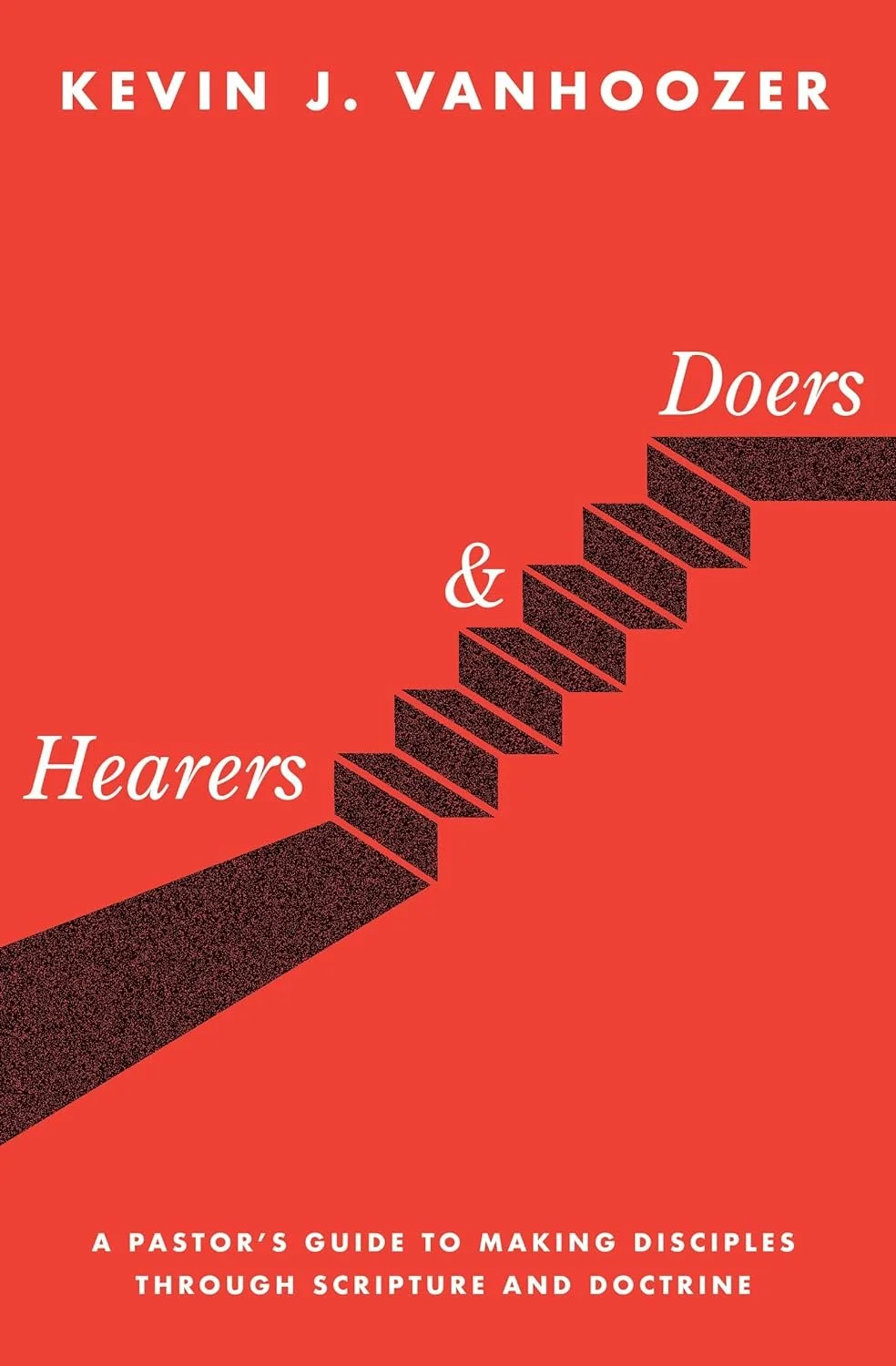The views expressed in this article are of the author only and do not necessarily represent those of the Center for Pastor Theologians.
Hearers and Doers: A Pastor’s Guide to Making Disciples through Scripture and Doctrine
Nancy R. Pearcey
Lexham (2019). 296 pp.
Hearers & Doers is the third book in Kevin J. Vanhoozer’s unofficial trilogy on “the vocation of the pastor theologian” (p. xi), preceded by Faith Speaking Understanding (John Knox, 2014) and Pictures at a Theological Exhibit (IVP Academic, 2016). This book, broadly speaking, is written to pastors as (per the subtitle) a “Guide for Making Disciples.” In the preface, Vanhoozer writes that this book “is intended to help pastors fulfill their Great Commission to make disciples, with emphasis on the importance of teaching disciples to read the Scriptures . . . theologically” (p. xi). Taken from another angle, Vanhoozer’s animating question is “Why should pastors study theology,” to which he provocatively answers, “I believe the church today ministers most practically when it teaches people to read the Bible theologically” (p. xxii). Taken as a whole, Vanhoozer’s goal for this book is to give pastors an understanding of their calling and goals as ministers of the gospel, to argue for the centrality of Scripture and doctrine in Christian ministry, and to outline a programming for producing disciples, leveraging Scripture for fulfilling that calling.
As readers of Vanhoozer’s other works may expect, charming and insightful language and imagery abound in Hearers & Doers. The images Vanhoozer employs provide vitality and clarity to the prose, unifying the arguments and making for a pleasurable reading experience. In particular, he infuses the entire book with the language and imagery of physical fitness, giving the titles “Warming Up” and “Working Out” to the two parts of the books, respectively. As such, the book is set up as a workout program of sorts for pastors to guide their congregations into becoming “fit” citizens of God’s kingdom.
In the early chapters Vanhoozer argues that Scripture is the pastor’s tool for freeing the church from its captivity to cultural idols. Borrowing language from Charles Taylor’s A Secular Age, Vanhoozer notes the power of the social imaginary, a “picture that frames our everyday beliefs and practices” (p. 8). He exhorts the pastors to whom he is writing to become students of the cultural context in which they live, dedicating all of chapter two to “examining three formative aspects of contemporary culture: its ruling images of wellness, good diet, and fitness” (p. 42). The role then of pastors is to counter these cultural imaginaries and replace them with scriptural ones. By shaping their imaginations with Scripture, pastors can make disciples who are made “fit” to the purpose to which God has called them and able to accomplish their mission in the world. Carrying his central metaphor even further, Vanhoozer argues that disciples cannot attain or maintain fitness without regularly “exercising” their spiritual “core” through Scripture and doctrine.
In part two Vanhoozer outlines a “workout plan” that pastors can implement in their congregations to produce fit disciples of Christ’s kingdom. Helpfully, the “exercises” that Vanhoozer commends are neither overly abstract on the one hand nor superficially mechanistic on the other. For instance, the exercises he suggests in chapter five are thoroughly undergirded by an extended discussion on the solas of the Reformation (p. 96 ff.) and the centrality of the Word in the life and worship of the church. He aims here to cast a vision for the pastor as a physician who uses the Word to recapture the imagination and heal the “eyes of the heart” of would-be disciples who have been captivated by the cultural social imagination. In chapter six Vanhoozer also rehearses and summarizes his work on the church as a theater of the gospel (p. 143 ff.). Finally, as he finishes outlining his workout plan with Scripture at the center, he spends much of chapter seven articulating a Protestant view of the centrality of Scripture’s proper context within a generous appeal for unity and “Protestant catholicity” (p. 186). He concludes in chapter eight with an appeal to live and die well in the service and imitation of Christ.
As many have come to expect from Vanhoozer, the vibrancy and liveliness of the writing and metaphors Hearers & Doers does not by any means come at the expense of the richness of its ideas. The book hardly ever descends into cheesy or glib prose—if it does at all. A potential drawback of Vanhoozer’s work here would only be the amount of ground he seeks to cover in a relatively small number of pages. However, the text’s concise but broad vision is also its strength. Some of the most valuable content here consists in the comprehensive charge for pastoral ministry found within. Rather than superficially implementing a new ministry program or teaching strategy, Vanhoozer outlines a rich and theological vision for who a pastor is, what a pastor does, and for what purpose he or she does it. For pastor theologians, this book would serve as a wonderful orientation as they launch into a new season of ministry or hire a new associate staff member. The clear and winsome prose will give occasion for meaningful reflection and conversation with partners in the ministry. For those looking for a primer that is in keeping with the theological vision of ministry advocated by such organizations as The Center for Pastor Theologians, Hearers & Doers is a wonderful place to start.
Zachary Wagner serves as the Editorial Director of the Center for Pastor Theologians. He is a DPhil candidate in New Testament at the University of Oxford and the author of Non-Toxic Masculinity: Recovering Healthy Male Sexuality (IVP, 2023). He is a member of the St. Basil Fellowship of the Center for Pastor Theologians.




